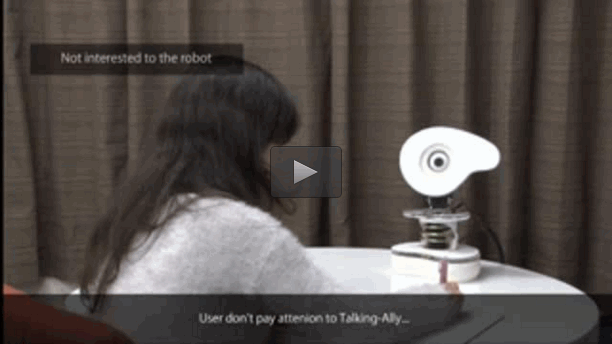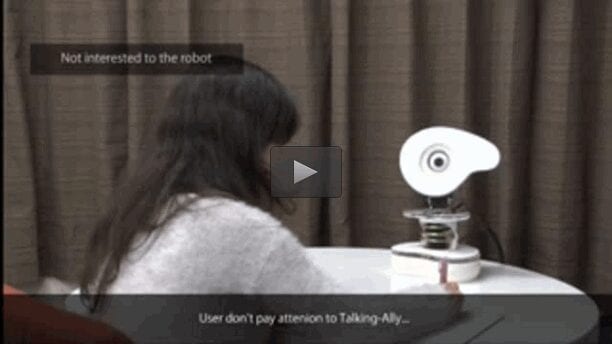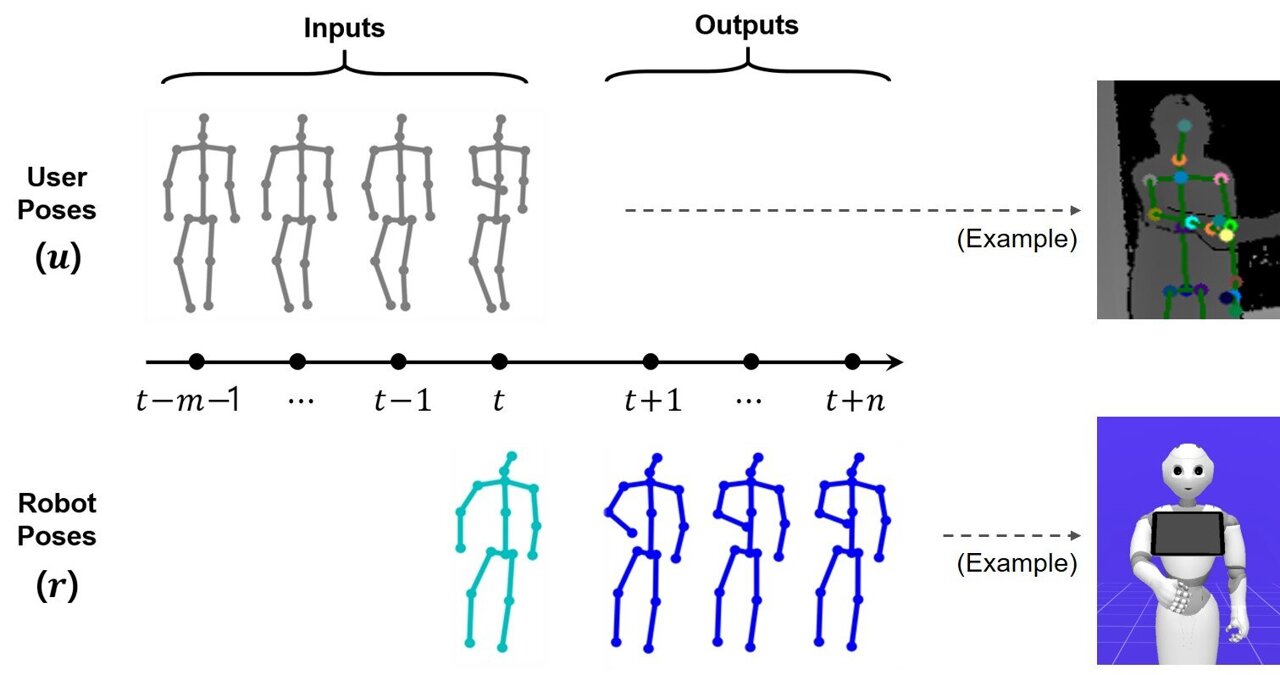
Communication in human dialogue is based on one another’s words and body language. We can sense whether the other person is distracted, and we change the course of our conversation and our actions to regain their attention.
Most existing robots, however, still use monologue mechanisms, even when engaging in dialogue with a person. For example, they continue speaking in the same way, even if the person is not paying attention.
Researchers at the Interactions and Communication Design (ICD) Lab at Toyohashi University of Technology have devised the novel robotic communication approach that takes into account the listener’s attention. The robot follows a person’s gaze and determines if that person is distracted by, for instance, a sports event in the background or something in their surroundings. The robot bends forward and nods if the person is watching television or it turns its head and looks around if the person is looking elsewhere. These behaviors are accompanied by appropriate utterance intended to regain the person’s attention. Experiments have confirmed that these adaptive interactions considerably increase the other party’s attention focused toward the robot as compared with the gestures and speech generated without considering the person’s gaze.
“We have set up an environment to manipulate the person’s attention with an engaging sports program broadcast simultaneously with the human-robot interaction. This allowed us to validate a suite of conversation situations and utterance-generation patterns,” said Hitomi Matsushita, first author of the conference paper on the robot.
“Talking-Ally dynamically determines and synchronizes its body language, turn initials, and entrust behaviors within the speech, according to the person’s attention coordinates,” Professor Michio Okada, head of the ICD Lab, explained. “Our analysis shows that this is significantly more persuasive than generating these behaviors randomly.”
Read more: Robot adapts it’s voice and gestures to keep your attention
The Latest on: Human-robot interaction
[google_news title=”” keyword=”Human-robot interaction” num_posts=”10″ blurb_length=”0″ show_thumb=”left”]
via Google News
The Latest on: Human-robot interaction
- TechCrunch Minute: Audible deploys AI-narrated audiobooks. Can it replace the human touch?on May 8, 2024 at 11:01 am
AI is coming for audiobooks, and that is not an entirely bad thing. But it is a cause of concern in the realm of audio titles ...
- New approach uses generative AI to imitate human motionon May 8, 2024 at 10:11 am
An international group of researchers has created a new approach to imitating human motion by combining central pattern generators (CPGs) and deep reinforcement learning (DRL). The method not only ...
- Teaching robots to move by sketching trajectorieson May 8, 2024 at 7:02 am
Getting robots to perform even a simple task requires a great deal of behind-the-scenes work. Part of the challenge is planning and executing movements, everything from turning wheels to lifting a ...
- Brains, robots, and interfaceson May 7, 2024 at 4:02 am
Last year, Nature Electronics declared brain-computer interfaces their technology of the year. These interfaces can now translate neural signals into speech, at speeds close to normal conversation.
- Robots unveiled at National Robotarium family open dayon May 5, 2024 at 5:00 pm
The National Robotarium at Heriot-Watt University hosted its first family open day, part of the 2024 Edinburgh Science Festival.
- Science Group Adds UMass Lowell AI, Robotics Expert Yanco to Honor Roll that Includes Edisonon April 30, 2024 at 9:00 pm
Renowned artificial intelligence and robotics expert Holly Yanco, who leads UMass Lowell’s Richard A. Miner School of Computer and Information Sciences, was recently elected as a 2023 fellow of the ...
- Astribot S1 AI Humanoid robot unveiled demonstrating its agility, dexterity and accuracyon April 27, 2024 at 12:55 am
This week the Astribot S1 humanoid robot was unveiled in Shenzhen, China, marking another significant leap forward in autonomous robotics ...
- University Of New South Wales- Introducing Robots to Baby Care: Exploring the Future of Parentingon April 26, 2024 at 11:15 pm
More and more children are growing up with robots at home, but their impact on early learning and development is still largely unknown and unregulated.Technology has a profound impact on children.From ...
- SUPCON opens new innovation center and launches Navigator α humanoid roboton April 26, 2024 at 5:30 am
SUPCON has debuted its new humanoid robot for R&D and industrial use at the new Zhejiang Humanoid Robot Innovation Center.
- Europe taps deep learning to make industrial robots safer colleagueson April 26, 2024 at 1:07 am
European researchers have launched the RoboSAPIENS project to make adaptive industrial robots more efficient and safer to work with humans.
via Bing News











